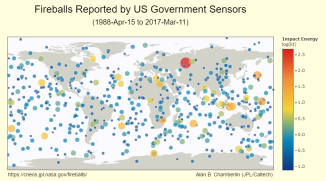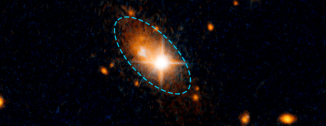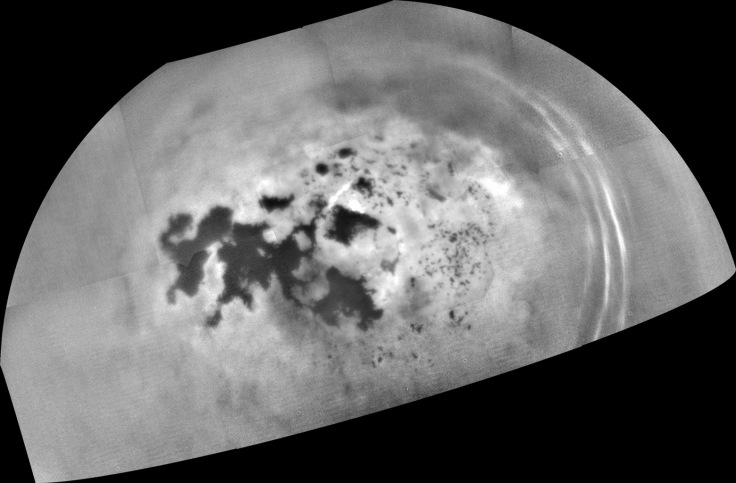What would be most dangerous, if an asteroid hits the Earth?
Courtesy: American Geophysical Union release
If an asteroid struck Earth, which of its effects—scorching heat, flying debris, towering tsunamis—would claim the most lives? A new study, published in Geophysical Research Letters and described as the first to look at all seven impacts of dangerous asteroids, has the answer: violent winds and shock waves are the most dangerous effects produced by Earth-impacting asteroids. Shock waves arise from a spike in atmospheric pressure and can rupture internal organs, while wind blasts carry enough power to hurl human bodies and flatten forests.
The study explored seven effects associated with asteroid impacts—heat, pressure shock waves, flying debris, tsunamis, wind blasts, seismic shaking and cratering—and estimated their lethality for varying sizes. The researchers then ranked the effects from most to least deadly, or how many lives were lost to each effect. According to the scientists, this is the first study that looks at all seven impact effects generated by hazardous asteroids and estimates which are, in terms of human loss, most severe.
Overall, wind blasts and shock waves were likely to claim the most casualties, an AGU release citing the study says. In experimental scenarios, these two effects accounted for more than 60% of lives lost. Shock waves arise from a spike in atmospheric pressure and can rupture internal organs, while wind blasts carry enough power to hurl human bodies and flatten forests.

Thankfully, it does not happen too often. The lead scientist Clemens Rumph, a Marie Curie Senior Research Assistant within Engineering and the Environment at the University of Southampton, also reported in another paper accepted for publication in Meteoritics and Planetary Science on 04 February 2017 that “an asteroid impact is a low probability event with potentially devastating consequences.”
And that “the Asteroid Risk Mitigation Optimization and Research (ARMOR) software tool calculates whether a colliding asteroid experiences an airburst or surface impact and calculates effect severity as well as reach on the global map. To calculate the consequences of an impact in terms of loss of human life, new vulnerability models are derived that connect the severity of seven impact effects (strong winds, overpressure shockwave, thermal radiation, seismic shaking, ejecta deposition, cratering and tsunamis) with lethality to human populations. With the new vulnerability models ARMOR estimates casualties of an impact under consideration of the local population and geography. The presented algorithms and models are employed in two case studies to estimate total casualties as well as the damage contribution of each impact effect. The case studies highlight that aerothermal effects are most harmful except for deep water impacts, where tsunamis are the dominant hazard. Continental shelves serve a protective function against the tsunami hazard caused by impactors on the shelf. Furthermore, the calculation of impact consequences facilitates asteroid risk estimation to better characterize a given threat and the concept of risk as well as its applicability to the asteroid impact scenario are presented. “
4)
Gravitational Wave kicks out monster black hole kicked out of distant galaxy core
Courtesy: AAS release and HubbleSite News:
Astronomers have uncovered a supermassive black hole that has been propelled out of the center of a distant galaxy by what could be the awesome power of gravitational waves.
Weighing more than 1 billion Suns, the rogue black hole is the most massive black hole ever detected to have been kicked out of its central home, says a release from teh American Astronomical Society.

Researchers estimate that it took the equivalent energy of 100 million supernovas exploding simultaneously to jettison the black hole. The most plausible explanation for this propulsive energy is that the monster object was given a kick by gravitational waves unleashed by the merger of two hefty black holes at the center of the host galaxy.
First predicted by Albert Einstein, gravitational waves are ripples in space that are created when two massive objects collide. The ripples are similar to the concentric circles produced when a hefty rock is thrown into a pond. Last year, the Laser Interferometer Gravitational-Wave Observatory (LIGO) helped astronomers prove that gravitational waves exist by detecting them emanating from the union of two stellar-mass black holes, which are several times more massive than the Sun.
Hubble’s observations of the wayward black hole surprised the research team. “When I first saw this, I thought we were seeing something very peculiar,” said team leader Marco Chiaberge of the Space Telescope Science Institute (STScI) and Johns Hopkins University, in Baltimore, Maryland. “When we combined observations from Hubble, the Chandra X-ray Observatory, and the Sloan Digital Sky Survey, it all pointed towards the same scenario. The amount of data we collected, from X-rays to ultraviolet to near-infrared light, is definitely larger than for any of the other candidate rogue black holes.”
Chiaberge’s paper will appear on March 30 in Astronomy & Astrophysics.
Hubble images taken in visible and near-infrared light provided the first clue that the galaxy was unusual. The images revealed a bright quasar, the energetic signature of a black hole, residing far from the galactic core. Black holes cannot be observed directly, but they are the energy source at the heart of quasars — intense, compact gushers of radiation that can outshine an entire galaxy. The quasar, named 3C 186, and its host galaxy reside 8 billion light-years away in a galaxy cluster. The team discovered the galaxy’s peculiar features while conducting a Hubble survey of distant galaxies unleashing powerful blasts of radiation in the throes of galaxy mergers.
The team calculated the black hole’s distance from the core by comparing the distribution of starlight in the host galaxy with that of a normal elliptical galaxy from a computer model. The black hole had traveled more than 35,000 light-years from the center, which is more than the distance between the Sun and the center of the Milky Way.
Read more at Hubblesite News
3) EXPERIMENTS SHOW TITAN LAKES MAY FIZZ WITH NITROGEN
From AAS Press and JPL :
A recent NASA-funded study has shown how the hydrocarbon lakes and seas of Saturn’s moon Titan might occasionally erupt with dramatic patches of bubbles.
For the study, researchers at NASA’s Jet Propulsion Laboratory in Pasadena, California, simulated the frigid surface conditions on Titan, finding that significant amounts of nitrogen can be dissolved in the extremely cold liquid methane that rains from the skies and collects in rivers, lakes and seas. They demonstrated that slight changes in temperature, air pressure or composition can cause the nitrogen to rapidly separate out of solution, like the fizz that results when opening a bottle of carbonated soda.

CREDIT: NASA/JPL-Caltech/Space Science Institute
NASA’s Cassini spacecraft has found that the composition of Titan’s lakes and seas varies from place to place, with some reservoirs being richer in ethane than methane. “Our experiments showed that when methane-rich liquids mix with ethane-rich ones — for example from a heavy rain, or when runoff from a methane river mixes into an ethane-rich lake — the nitrogen is less able to stay in solution,” said Michael Malaska of JPL, who led the study.
Here’s a video:
Read more:
https://www.jpl.nasa.gov/news/news.php?release=2017-071
2) STAR IN CLOSEST ORBIT EVER SEEN AROUND BLACK HOLE
Astronomers have found evidence of a star that whips around a likely black hole twice an hour. This could be the tightest orbital dance ever seen by a black hole and a companion star in our own Milky Way galaxy.
This discovery was made using two of NASA’s space-based telescopes, the Chandra X-ray Observatory and NuSTAR, and the Australia Telescope Compact Array located in New South Wales, Australia.
The stellar couple — known as a binary — is located in the globular cluster 47 Tucanae, a dense cluster of stars in our galaxy about 14,800 light-years away from Earth.
While astronomers have known about the binary for many years, it wasn’t until 2015 that a team led by researchers from Curtin University and the International Centre for Radio Astronomy Research (ICRAR) found that it was likely made up of a black hole pulling material from a companion star.
New observations from Chandra show the system — known as X9 — consistently changes in X-ray brightness every 28 minutes, which is likely the length of time it takes the companion star to make one complete orbit around the black hole.
Along with evidence of large amounts of oxygen in the system, this makes a strong case that X9 contains a white dwarf star orbiting a black hole at just 2.5 times the separation between the Earth and the Moon.
“This white dwarf is so close to the black hole that material is being pulled away from the star and dumped onto a disk of matter around the black hole before falling in,” said first author Dr. Arash Bahramian, from the University of Alberta in Canada and Michigan State University in the United States.
“Luckily for this star, we don’t think it will follow this path into oblivion — it should stay in orbit.”
Although the white dwarf does not appear to be in danger of falling in or being torn apart by the black hole, its fate is uncertain.
Associate Professor James Miller-Jones, from Curtin University and ICRAR, said, “We think the star may have been losing gas to the black hole for tens of millions of years and by now has now lost the majority of its mass.”
“Over time, we think that the star’s orbit will get wider and wider as even more mass is lost, eventually turning into an exotic object similar to the famous diamond planet discovered a few years ago,” he said.
How did the black hole get such a close companion? One possibility is that the black hole smashed into a red giant star and as gas from the outer regions of the star were ejected a binary was formed containing a black hole and a white dwarf. The orbit of the binary would then have shrunk as gravitational waves were emitted until the black hole started pulling material from the white dwarf.
The gravitational waves being produced by the binary system have a frequency too low to be detected by the ground-based facilities that confirmed the existence of gravity waves last year but it is possible that space-based gravity wave observatories in the future could be sensitive enough to detect them.
Co-author Vlad Tudor, also from the Curtin University node of ICRAR, said an alternative theory would involve a neutron star that’s being spun up as material is pulled away by the black hole.
“Much like a spinning top as you pull the string from around its middle to make it go — but this theory doesn’t explain everything we’re seeing here, so our best current explanation is that we’re dealing with a white dwarf in extremely close proximity to a black hole,” he said.
Read in New Scientist on how the Oldest, biggest black holes may have come from enormous stars
Keywords: #Astronomy #BlackHoles
This is the beginning of my astronomy series:
India and the World’s Largest Radio telescope SKA
What were Indian scientists doing in the unimaginably empty, arid and remote Australian outback? The unimaginably arid, empty, remote Western Australian outback is hardly a place one associates with Indian scientists. Murchison, 700 km north of Perth and traditional home of the Warrari aborigines, is size of the Netherlands and has about 140 people. This is where Ravi Subramanyam, director of Raman Research Institute (RRI), Bangalore, headed some six years back, to work out India’s role in the world’s largest radio telescope, the Square Kilometre Array (SKA).
India has a crucial role to play — it will be SKA’s brain and nervous system, so to speak, or to put it more scientifically, the SKA’s Telescope Manager that will monitor all the telescope dishes located in two sites — South Africa (for mid frequency radio waves) and Australia (for low frequency radio waves).
Read the full report ” Wide angle view of the Universe ” in Nature India:
India’s ASTROSAT set for global stardom
As well as boosting the activities of Indian astronomers — who are abuzz with excitement — India’s ASTROSAT, launched in September 2015, is expected to benefit researchers all over the world. Designed to orbit Earth for five years, it has capabilities not offered by existing space telescopes.
With five instruments, or ‘payloads’, tuned to detect different types of light, ASTROSAT will observe a wider variety of wavelengths than most other satellites, from visible light to the ultraviolet and X-ray bands.
“It is a notable and fantastic step forward for Indian astronomy, and has broad implications for astronomers everywhere,” says Henry Yang, a mechanical engineer at the University of California, Santa Barbara, who is chair of the board for the Thirty Meter Telescope (TMT) project, an observatory planned for Mauna Kea, Hawaii.
Read the full report in Nature
Leave a comment